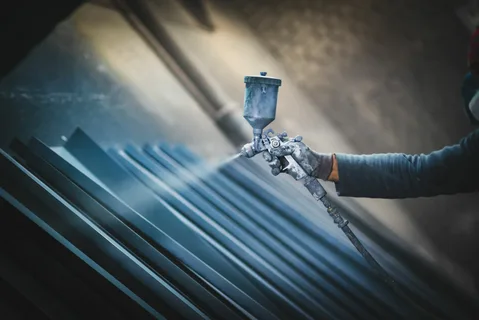Industrial Coating Market: The Rise of Water-based and Solvent-free Coatings

The industrial coating market has witnessed significant shifts in recent years, with a growing focus on sustainability, health, and environmental responsibility. A key development in this transformation is the rise of water-based and solvent-free coatings, which are gaining widespread adoption across industries due to their environmentally friendly properties and enhanced performance. These coatings represent a new wave of innovation that aims to reduce the environmental impact of traditional coatings while maintaining the high quality protection and durability that industrial applications require.
Market Insights: The Shift Toward Eco-friendly Coatings
The adoption of water-based and solvent-free coatings is being driven by several key factors, including strict environmental regulations, growing sustainability concerns, and an increasing demand for safer working environments.
One of the most significant drivers is the tightening of environmental regulations across industries. Governments and regulatory bodies worldwide are imposing stricter limits on VOC emissions, compelling manufacturers to develop and adopt more eco-friendly coating solutions. Water-based and solvent-free coatings, with their low or zero VOC content, are seen as ideal solutions for companies looking to meet these new regulations and reduce their environmental impact.
The health and safety of workers are also a significant concern for manufacturers. Traditional solvent-based coatings can release harmful fumes that may cause respiratory issues, headaches, or skin irritation during application. In contrast, water-based and solvent-free coatings are generally safer to use, reducing the risk of exposure to toxic substances. This has led to an increased preference for these types of coatings, especially in industries such as automotive, construction, and manufacturing, where workers are exposed to coatings on a daily basis.
Applications and Benefits of Water-based and Solvent-free Coatings
Water-based and solvent-free coatings are increasingly being used in various industrial sectors due to their enhanced performance and environmental benefits. In the automotive industry, these coatings are used for both interior and exterior finishes. Water-based automotive paints, for example, offer excellent durability, color retention, and resistance to chemicals, making them ideal for automotive parts exposed to harsh conditions.
In construction and architecture, water-based coatings are used for walls, floors, and exterior surfaces to provide long-lasting protection against the elements. These coatings not only improve the appearance of buildings but also contribute to energy efficiency by providing insulation and reducing the need for excessive heating or cooling.
The marine industry is also adopting water-based and solvent-free coatings, particularly for ships and offshore structures. These coatings offer corrosion resistance in marine environments, helping to extend the life of vessels and platforms while reducing maintenance costs. Additionally, the use of water-based coatings in the marine industry is aligned with the increasing push for environmentally friendly solutions in water-based industries.
Solvent-free coatings are also gaining traction in the industrial equipment and manufacturing sectors. These coatings are applied to machinery, pipelines, and storage tanks to protect them from corrosion, chemicals, and extreme temperatures. By using solvent-free coatings, manufacturers not only ensure better durability and performance but also contribute to creating a safer working environment by minimizing the release of harmful fumes and chemicals.
Market Trends and Future Outlook
Looking ahead, the trend toward water-based and solvent-free coatings is expected to continue gaining momentum. As sustainability becomes an even greater priority for industries, the demand for coatings that support green initiatives will increase. Manufacturers will continue to focus on improving the performance of water-based and solvent-free formulations, ensuring that they can compete with traditional solvent-based coatings in terms of durability and cost-effectiveness.
- Art
- Causes
- Crafts
- Dance
- Drinks
- Film
- Fitness
- Food
- Games
- Gardening
- Health
- Home
- Literature
- Music
- Networking
- Other
- Party
- Religion
- Shopping
- Sports
- Theater
- Wellness


